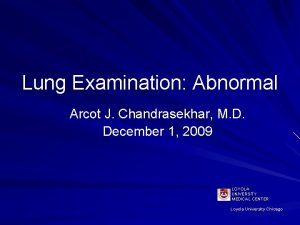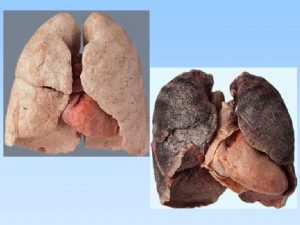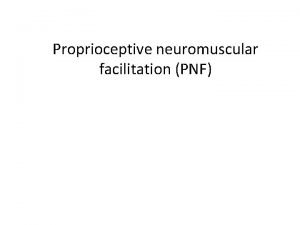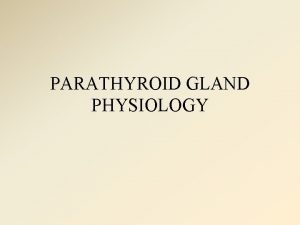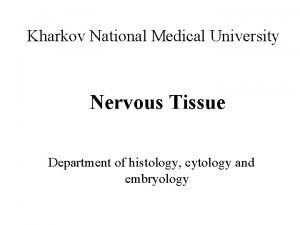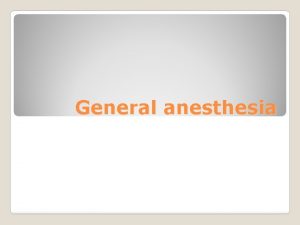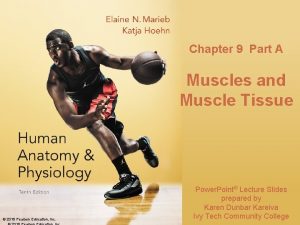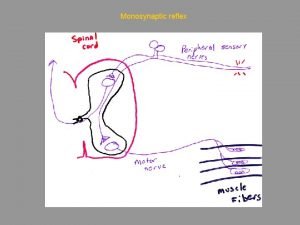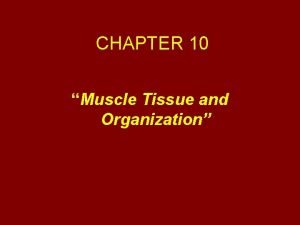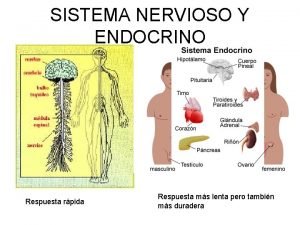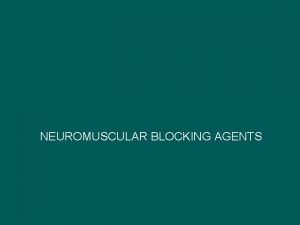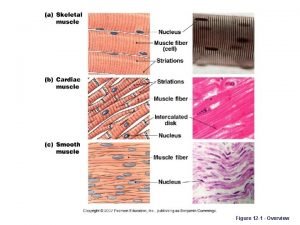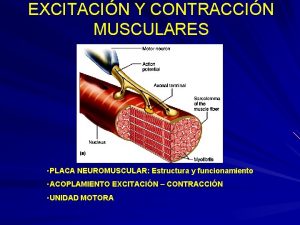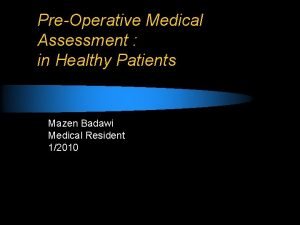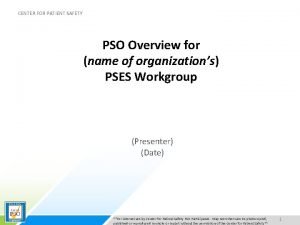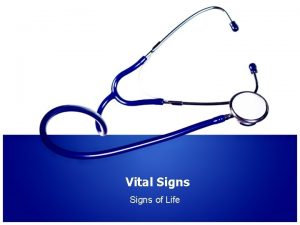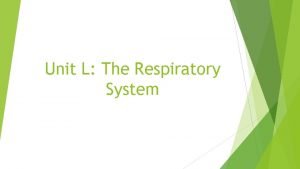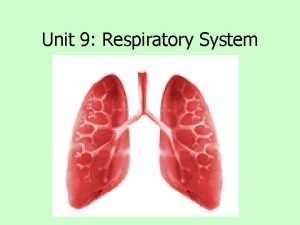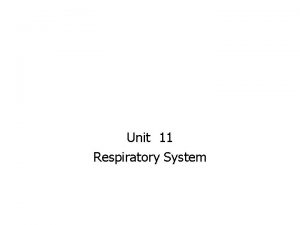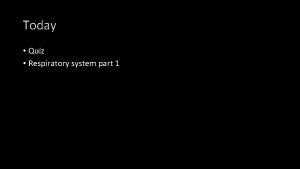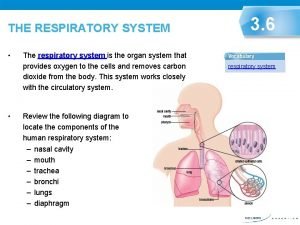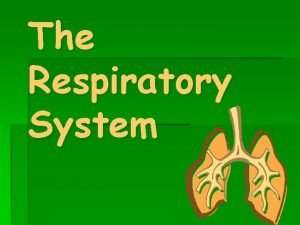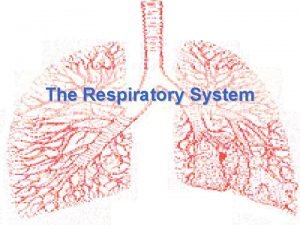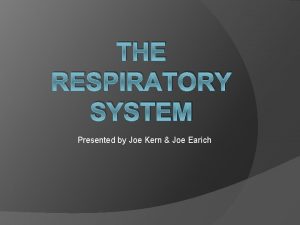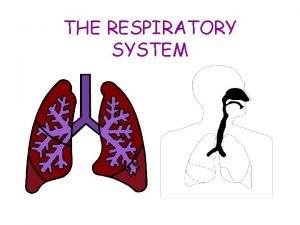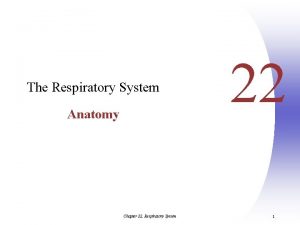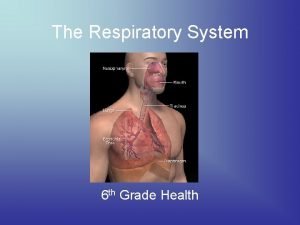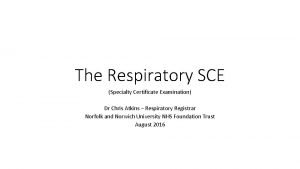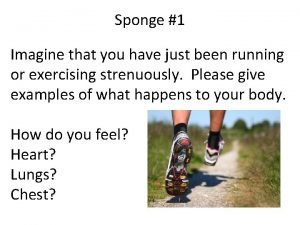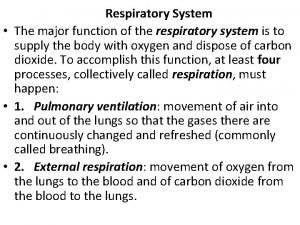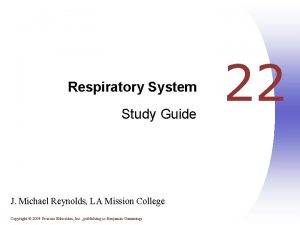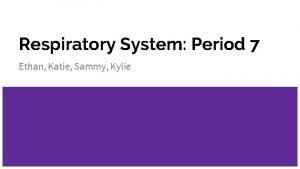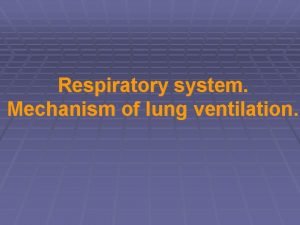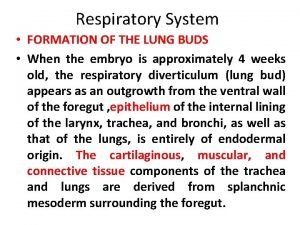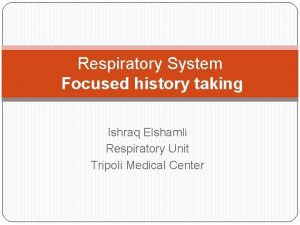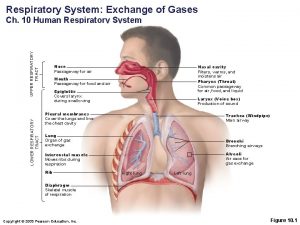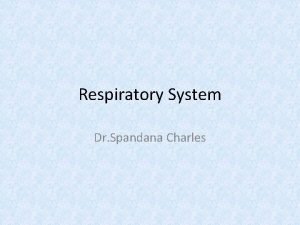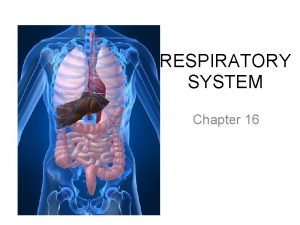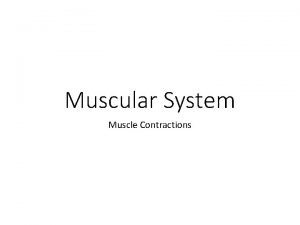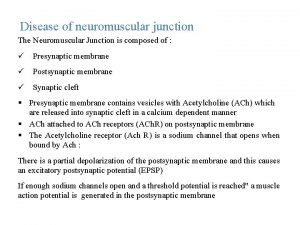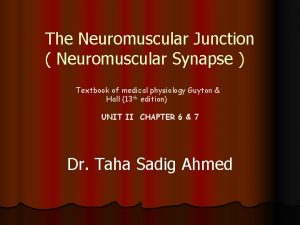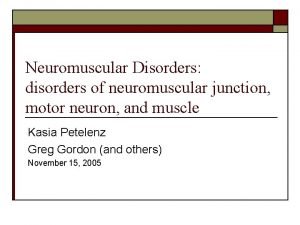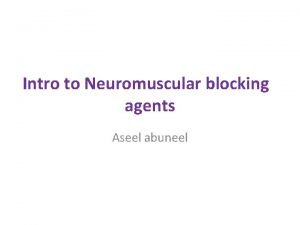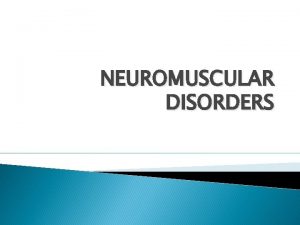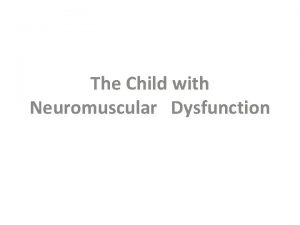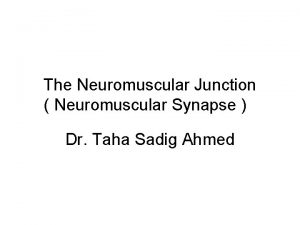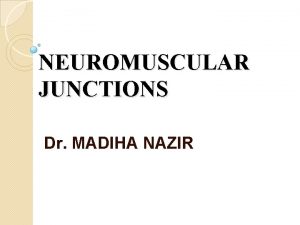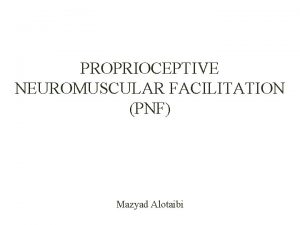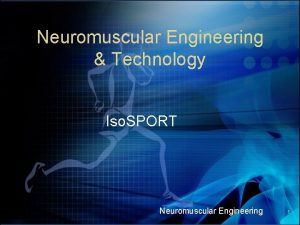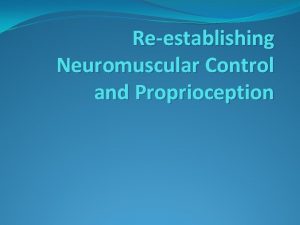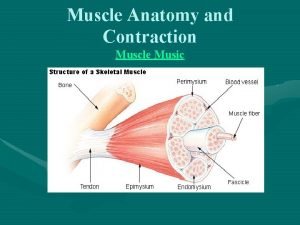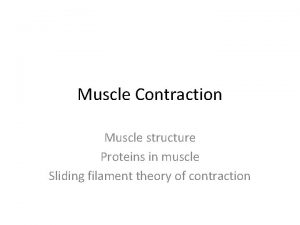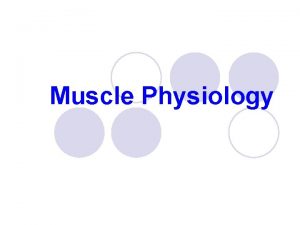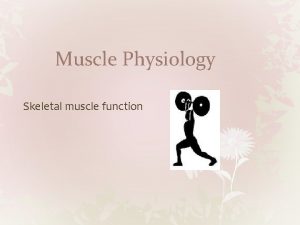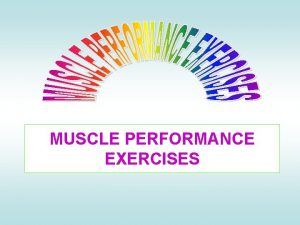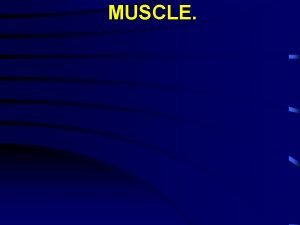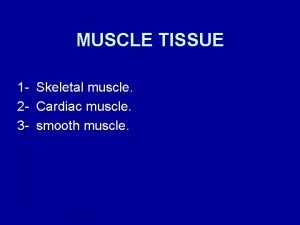Respiratory Muscle Evaluation in Patient with Neuromuscular Disease



























































- Slides: 59


Respiratory Muscle Evaluation in Patient with Neuromuscular Disease Dina Abouelkeir Abd. Alla Lecturer of Chest Medicine, MUH 2015

�Involvement of respiratory muscles is a nearly constant feature of neuromuscular disorders, leading to respiratory failure. �The progression of respiratory complications to chronic respiratory failure in patients with NMD generally occurs as a direct consequence of two principal factors: �Weakness/ fatigue of respiratory muscles �Incapacity to maintain the airways free of secretions

History & Examination Tests of Overall Respiratory Function Tests of Respiratory Muscle Strength Diaphragm strength

�Generalized muscle weakness triggers the suspicion of neuromuscular disease as the cause of respiratory symptomatology. �Alternatively, respiratory failure can be the sole presenting manifestation of neuromuscular disease. �Symptoms due to respiratory muscle weakness include dyspnea, most often with exertion. �However, with severe limb muscle weakness, the patient’s ability to exert may be insufficient to elicit dyspnea.

�As the disease progresses, dyspnea can occur at rest, a sign that respiratory failure may be imminent. �Involvement of the upper airway musculature: �Difficulties with speech or swallowing aspiration associated with dysphonia �Sleep-related breathing disorders �Peak expiratory flows can be so diminished that these individuals cannot adequately clear airway debris.

The physical examination: �May be normal during the initial stages �As the disease progresses, tachypnea at rest may be an early manifestation, associated with a decrease in tidal volume. This rapid shallow breathing pattern has the advantage of lowering the elastic work per breath but has the disadvantage of increasing dead space ventilation (increasing the dead space to tidal volume [VD: VT] ratio).

�Normally, the abdomen and rib cage expand synchronously during inspiration. �With inspiratory and expiratory muscle weakness, this pattern of motion is altered. Diaphragm weakness may cause the abdomen to move inward as the rib cage expands during inspiration. �This pattern may be reversed with weakness of the inspiratory rib cage muscles.

�Chest wall motion can be assessed using: �Magnetometers measure changes in rib cage and abdomen diameters. �Respiratory impedance plethysmograph measures changes in rib cage and abdomen cross-sectional areas. �Both techniques will detect paradoxical motion of the rib cage and abdomen and asynchronous motion that may not be noted during the physical exam.

RIP


History & Examination Tests of Overall Respiratory Function Tests of Respiratory Muscle Strength Diaphragm strength

1 • Static Lung Volumes 2 • Dynamic Spirometry and Maximum Flow 3 • Maximum Voluntary Ventilation 4 • Arterial Blood Gases: Awake 5 • Measurements during Sleep 6 • Carbon Monoxide Transfer 7 • Exercise Testing

Static Lung Volumes �The most frequently noted abnormality of lung volumes in patients with respiratory muscle weakness is a reduction in vital capacity (VC). �Residual volume (RV) is usually increased, normal or the latter particularly with marked expiratory weakness. � RV/TLC ratios are often increased without necessarily implying airway obstruction.

Limited by weakness of both the inspiratory, and expiratory muscles In mild respiratory muscle weakness, VC is less sensitive than maximum respiratory pressures Vital Capacity In more advanced disease, marked reductions in VC can occur with relatively small changes in maximum pressures. In patients with isolated or disproportionate bilateral diaphragmatic weakness or paralysis, the VC shows a marked fall in the supine compared with the erect posture

Ø In most normal subjects, VC in the supine position is 5– 10% less than when upright. Ø A fall of 30% or more is generally associated with severe diaphragmatic weakness

Dynamic Spirometry and Maximum Flow Normal flow volume loop moderate or severe respiratory muscle weakness

Saw-tooth appearance Is it specific?

Saw-tooth appearance can also occur in: Ø Extrapyramidal disorders Ø Obstructive sleep apnea Ø Nonapneic snoring Ø Thermal injury of the upper airway

Maximum Voluntary Ventilation �It is highly effort dependent and is influenced by factors other than respiratory muscle function. These include airway resistance and respiratory system compliance. �Because it is a difficult and strenuous test to perform and adds little to more simple tests such as VC, it is no longer recommended in the evaluation and management of patients with respiratory muscle weakness

Arterial Blood Gases: Awake Pa. O 2 Acute: marked Chronic: Mild Pa. CO 2 Mild: Advanced:

In the absence of primary pulmonary disease, daytime hypercapnia is unlikely unless: Ø Respiratory muscle strength is reduced to < 40% of predicted and ØVC is reduced to < 50% of predicted

Measurements during Sleep During rapid eye movement (REM) sleep Dips in oxygen saturation gradual rise in PCO 2

Carbon Monoxide Transfer TLCO • Normal or mildly reduced KCO • Supernormal


History & Examination Tests of Overall Respiratory Function Tests of Respiratory Muscle Strength Diaphragm strength

1 2 3 4 • Maximal inspiratory and expiratory pressures • Sniff nasal inspiratory pressure • Peak cough flow • Diaphragm strength

Maximal inspiratory and expiratory pressures �Definition �Technique �Reference values �Advantages �Disadvantages �The primary tests for assessing respiratory muscle strength �MIP is the lowest pressure developed during a forceful inspiration against an occluded airway. It is recorded as a negative number. �MEP is the highest pressure developed during a forceful expiratory effort against an occluded airway. It is recorded as a positive number

�Definition �Technique �Reference values �Advantages �Disadvantages �PImax and PEmax are obtained at the mouth with use of either a flanged mouthpiece or a tube mouthpiece that is connected to a mechanical pressure gauge. � The system requires a small leak (1 -2 mm hole) to prevent glottis closure and to reduce the use of buccal muscles. �The inspiratory and expiratory pressure must be maintained, ideally for at least 1. 5 seconds. �The maneuver should be repeated at least five times with the maximum value of three maneuvers that vary by less than 20% reported.

Measurement of maximal static respiratory pressures

�Definition �Technique �Reference values �Advantages �Disadvantages �The lung volume at which the maneuver is performed is critically important. �PImax is a measure of the diaphragm and other inspiratory muscles and is highest when obtained from RV. �PEmax reflects the strength of the expiratory muscles (primarily abdominal muscles) and is highest when obtained from TLC.

�Definition �Definitive reference values for PImax and PEmax have not been established. �Technique �Reference values �Advantages �Disadvantages �Differences in technique, mouthpiece design and lung volumes at which the measurement was obtained contribute to differences in published reference ranges.

Reference values with lower limits of normal for PImax and Pemax Age (yr) PImax (cm. H 2 O) (LLN) PEmax (cm. H 2 O) (LLN) 20– 54 Male: 124 (80) Male: 233 (149) Female: 87 (55) Female: 152 (98) Male: 103 (71) Male: 218 (144) Female: 77 (51) Female: 145 (105) Male: 103 (71) Male: 209 (135) Female: 73 (47) Female: 140 (100) Male: 83 (65) Male: 174 (140) Female: 57 (45) Female: 116 (90) 55– 59 60– 64 65– 85 PImax: maximal inspiratory pressure, PEmax: maximal expiratory pressure, LLN: lower limits of normal

�Generalized neuromuscular weakness reduces both PI max and PE max �Isolated involvement of the diaphragm, such as with idiopathic diaphragm paralysis or the early stages of amyotrophic lateral sclerosis, may reduce only PI max

The “ 20– 30– 40 rule” Respiratory failure is likely when: Ø VC is less than 20 m. L/kg Ø PImax is less negative than(–)30 cm H 2 O Ø PEmax is less than 40 cm H 2 O A PEmax less than 60 cm H 2 O predicts an ineffective cough.

�Widely used �Definition �Technique �Reference values �Noninvasive �Can obtain at bedside �Reference values available �Predicts clinical consequences �Advantages �Disadvantages �Good NPV

�Definition �Technique �Reference values �Advantages �Disadvantages �PImax and PEmax are dependent on: �Lung volumes �Maximum effort �Proper technique �Patients with bulbar dysfunction may not be able to obtain a good seal on the mouthpiece, which will reduce maximum mouth pressures.

�Definition �Technique �Reference values �Advantages �Disadvantages �Because of these factors, the PPV of PImax and PEmax is relatively low. �Normal values exclude significant respiratory muscle weakness, but low values may reflect poor effort or technique or may be due to alterations in lung volumes rather than respiratory muscle dysfunction.

Respiratory Pressure Meter Micro. RPM™

Sniff nasal inspiratory pressure �The sniff nasal inspiratory pressure (SNIP) is a simple and non invasive test of global inspiratory muscle strength. �A plug, connected to a pressure transducer, is wedged into one nostril. �The patient is instructed to make short, sharp, maximal inspiratory efforts (sniffs) through the unobstructed nostril. �During the sniff, the nasal valve of the patent nostril collapses and the pressure measured beyond the collapsed segment closely reflects intrathoracic pressure and, therefore, inspiratory muscle strength.

�The measurement of SNIP is particularly useful in patients with NMD with facial muscle weakness because it obviates the use of a mouthpiece. �The best value of at least 10 trials is considered. �SNIP values > 60 cm. H 2 O in women and > 70 cm. H 2 O in men eliminate a significant weakness of inspiratory muscles. �It is useful in monitoring respiratory muscle strength in patients with ALS; a value less than 40 cm. H 2 O is a sensitive test for predicting mortality

�The SNIP and the PImax are complementary tests of inspiratory muscle strength, and the highest pressure of either test should be considered. �Combining the SNIP measurement with PImax reduces the number of false-positive diagnoses of inspiratory muscle weakness by 19% �The SNIP test is unreliable in patients with upper airway distortion and nasal congestion.

Peak cough flow � The peak expiratory flow can be measured during a vigorous cough effort and is called the peak cough flow (PCF). � It is measured either with a peak-flow meter or with a pneumotachograph. � The best of 4 to 7 trials is considered. � Normal values of PCF are > 350 l/min in the adult. � Patients with PCF values < 270 l/min are at risk of secretion retention and respiratory failure in case of pulmonary infection � Those with PCF values < 160 l/min are totally unable to clear their airways

Digital peak expiratory flow meter


History & Examination Tests of Overall Respiratory Function Tests of Respiratory Muscle Strength Diaphragm strength

Transdiaphragmati c pressure Diaphragm strength Phrenic nerve stimulation Diaphragm thickness

Transdiaphragmatic pressure (Pdi) �Diaphragm contraction lowers intrathoracic pressure while increasing intra-abdominal pressure. �Pressure developed specifically by the diaphragm can be measured as the difference between abdominal pressure, as assessed with a gastric catheter (Pga), and the pleural pressure, as assessed with an esophageal catheter (Pes). Transdiaphragmatic pressure (Pdi) is then calculated as Pdi = Pga - Pes

�The measurement of maximum Pdi (Pdi max) can be obtained by having the patient inspire as forcefully as possible against a closed airway, which is known as the Mueller maneuver, or by having the patient sniff forcefully. �The peak Pdi measured during a maximal sniff maneuver from FRC (sniff Pdi) is the best test for diaphragm strength. �The best value of at least 10 trials is considered. � Sniff Pdi values > 80 cm. H 2 O in women and > 100 cm. H 2 O in men eliminate a significant weakness of the diaphragm.

� Advantage: �Specifically assessing diaphragm function �Disadvantages: �It requires placement of esophageal and gastric catheters that may be uncomfortable or even hazardous in patients with swallowing impairment. �In patients with diaphragm paralysis or profound respiratory muscle weakness, proper placement of the gastric catheter may be difficult because the changes in Pga and Pes may parallel one another. �The maneuver needed to generate maximum transdiaphragmatic pressure (Pdi max) is complex and difficult to perform

Phrenic nerve stimulation �The phrenic nerves can be stimulated by either electrical or pulsed magnetic fields. �The diaphragm is innervated by the C 3–C 5 phrenic nerve roots, and all three branches are accessible to either form of stimulation. �The electric technique selectively stimulates the phrenic nerve and activates the diaphragm. In contrast, the magnetic technique is non-selective, not only stimulating the phrenic nerve but also the cervical nerve roots that, in turn, activate the muscles of the rib cage.

Phrenic nerve conduction time Pdi following PNS The time from the onset of the stimulus to the onset of the diaphragm action potential Measured as the magnitude of twitch Pdi Assesses the integrity of the phrenic nerve Assesses the mechanical output of the diaphragm A conduction time less than 9 msec is considered normal In normals, Pdi following bilateral electric PNS is generally between 25 and 35 cm. H 2 O

�Advantage �It requires no patient effort. �Dawbacks �The magnitude of twitch Pdi depends on the impedance of the abdomen and rib cage. �“contraction history”. Twitch potentiation is the phenomenon whereby twitch pressures are increased if there has been a preceding maximal contraction of the diaphragm. �The technology is not readily available to most clinicians

Imaging of the Diaphragm � CXR �Fluoroscopy �Ultrasound

Home Messages

1 2 3 • Involvement of respiratory muscles is a nearly constant feature of NMD • Respiratory muscle dysfunction in patients with NMD is manifested in a variety of ways. • Upright and supine VC is very important to assess diaphragm

4 5 6 • The “ 20– 30– 40 rule” • Sniff Pdi is the best test for diaphragm strength. • Neuromuscular ultrasound is an evolving technique that is now being used to image the diaphragm.


 Conducting zone respiratory
Conducting zone respiratory Disease respiratory
Disease respiratory Respiratory muscle
Respiratory muscle Patient 2 patient
Patient 2 patient Patient counselling for peptic ulcer disease
Patient counselling for peptic ulcer disease Bharathi viswanathan
Bharathi viswanathan Acondicionamiento neuromuscular dibujos
Acondicionamiento neuromuscular dibujos Pnf definition
Pnf definition Hypocalcemia neuromuscular excitability
Hypocalcemia neuromuscular excitability Sequence of events at the neuromuscular junction
Sequence of events at the neuromuscular junction Husos musculares y organos tendinosos de golgi
Husos musculares y organos tendinosos de golgi Neuromuscular spindle
Neuromuscular spindle Neuromuscular
Neuromuscular Anesthesia definition
Anesthesia definition T tubule
T tubule End plate potential
End plate potential Neuromuscular junction
Neuromuscular junction Neuromuscular junction
Neuromuscular junction Aferentes y eferentes
Aferentes y eferentes Neuromuscular blocking agents
Neuromuscular blocking agents Figure 12
Figure 12 Estructura de la placa neuromuscular
Estructura de la placa neuromuscular Preoperative medical evaluation of the healthy patient
Preoperative medical evaluation of the healthy patient Patient safety evaluation system
Patient safety evaluation system Smooth muscle cell
Smooth muscle cell _____ muscles run across the cheek.
_____ muscles run across the cheek. Vital signs defintion
Vital signs defintion Normal vital signs of newborn
Normal vital signs of newborn Bozeman respiratory system
Bozeman respiratory system Unit 9 respiratory system
Unit 9 respiratory system Diagnostic test of respiratory system
Diagnostic test of respiratory system Art-labeling activity: figure 13.2
Art-labeling activity: figure 13.2 Respiratory system
Respiratory system The part of the respiratory system that is the voicebox
The part of the respiratory system that is the voicebox Respiratory system coloring page
Respiratory system coloring page Primary secondary and tertiary bronchi
Primary secondary and tertiary bronchi Respiratory system purpose
Respiratory system purpose Conclusion on respiratory system
Conclusion on respiratory system Respiratory system jobs
Respiratory system jobs Chapter 7:10 respiratory system
Chapter 7:10 respiratory system Chapter 13 the respiratory system
Chapter 13 the respiratory system Perfusion respiratory
Perfusion respiratory Interesting facts about respiratory system
Interesting facts about respiratory system Acute medicine sce pass mark
Acute medicine sce pass mark What is ventilation-perfusion coupling
What is ventilation-perfusion coupling How respiratory system work with circulatory system
How respiratory system work with circulatory system Upper airway anatomy
Upper airway anatomy How to draw the respiratory system
How to draw the respiratory system Respiratory scale
Respiratory scale Upper respiratory tract
Upper respiratory tract Respiratory system diagram unlabeled
Respiratory system diagram unlabeled Respiratory system vocabulary
Respiratory system vocabulary Air path through the respiratory system
Air path through the respiratory system How the respiratory system maintains homeostasis
How the respiratory system maintains homeostasis Respiratory zone and conducting zone
Respiratory zone and conducting zone Lunc/busd
Lunc/busd Fever history taking
Fever history taking Upper and lower respiratory tract
Upper and lower respiratory tract Bronchiole.
Bronchiole. Rib muscle
Rib muscle

